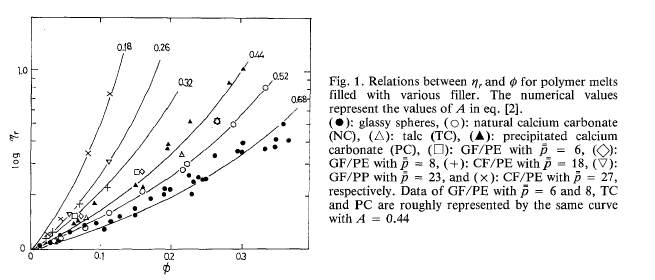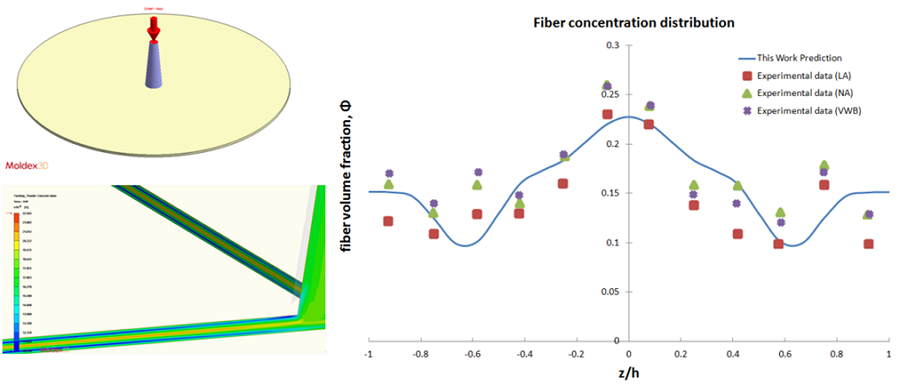In recent years, the production of large-sized plastic products has been moving towards the lightweight, high-strength and durable design concept. Glass fibers are added in many plastic parts to help achieve weight reduction, and also enhance product durability and impact resistance, which are the two basic criteria for the product requirement testing. In fiber-reinforced product (FRP) production, three major parameters: fiber orientation, fiber length (fiber breakage prediction) and fiber concentration are the three most important factors affecting the filling behavior, warpage, and product structural strength which ultimately determine the success of a FRP product production.
The research developments of the predictions on fiber orientation and fiber length have been well-developed in recent years. Through CAE simulation technology, users can attain the accurate predictions on these two parameters to get a better understanding on their effects on product warpage and mechanical strength. However, when compared with fiber orientation and fiber length, fiber concentration is more of an influential factor affecting the filling behavior; the higher the fiber concentration ratio is, the greater the viscosity will be. A higher viscosity will make the polymer melt difficult to flow forward.
Regarding the developments of fiber concentration study, first of all, in 1956, a derivative formula by Maron and Pierce was established to describe the phenomenon in suspension fluid that the filling material concentration will affect the relative viscosity of the liquid. Later in 1980, Kitano et al. conducted an experiment on different fillers in suspension including glass fibers and carbon fibers, and was able to validate the Maron and Pierce’s formula is consistent with the experiment result (Fig. 1).
 Fig. 1 The experiment result on different fillers including glass fibers and carbon fibers are consistent with the formula
Fig. 1 The experiment result on different fillers including glass fibers and carbon fibers are consistent with the formula
(Ref: An empirical equation of the relative viscosity of polymer melts filled with various inorganic fillers, T. Kitano, T. Kataoka, and T. Shirota, 1980)
Based on both research studies and scientific experiments, Moldex3D is the only simulation software that can provide a comprehensive prediction on all the three major factors: fiber orientation, fiber length, and fiber concentration that directly affect the material properties of FRP products in the injection molding process. Apart from the existing powerful support for fiber orientation and fiber length analyses, Moldex3D R13 has rolled out the first and currently the only simulation capability available in the market for “Fiber Concentration Prediction” in order to plug in the gap that was previously lacking in the CAE analysis software. Through the true 3D numerical simulation of the simulated parts and the well-developed suspension balance model, the conservation equation of particle volume fraction can be derived by Moldex3D’s powerful computation. The accuracy of Moldex3D’s simulation has been further validated by the comparison of the simulation results with the experiment results of Vélez-García et al. published in 2012; both the simulation results and the experiment results show that fiber concentration distribution affects the melt viscosity which directly influences the filling velocity (Fig. 2).
 Fig. 2 The geometry of the model used in the experiment, and the fiber concentration in the plate area (left). The comparison of the experiment results and simulation results (right). As shown in the graph, the two results are almost consistent.
Fig. 2 The geometry of the model used in the experiment, and the fiber concentration in the plate area (left). The comparison of the experiment results and simulation results (right). As shown in the graph, the two results are almost consistent.
In summary, with Moldex3D’s breakthrough technology on the fiber concentration simulation, users can benefit from getting a comprehensive analysis on how fiber orientation, fiber length and fiber concentration affect the material properties of FRP products. The previous lacking in fiber concentration prediction has been offset by Moldex3D’s new simulation capability. Its powerful and fast computation in fiber simulation enables users to carry out simulation tasks for their FRP product designs much easily and by attaining the accurate and in-time simulation results, the process of product design and optimization can be drastically shortened which will ultimately contribute to a more enhanced production efficiency, faster time-to-market, and more importantly, more lightweight design concepts for FRP products can be further realized.